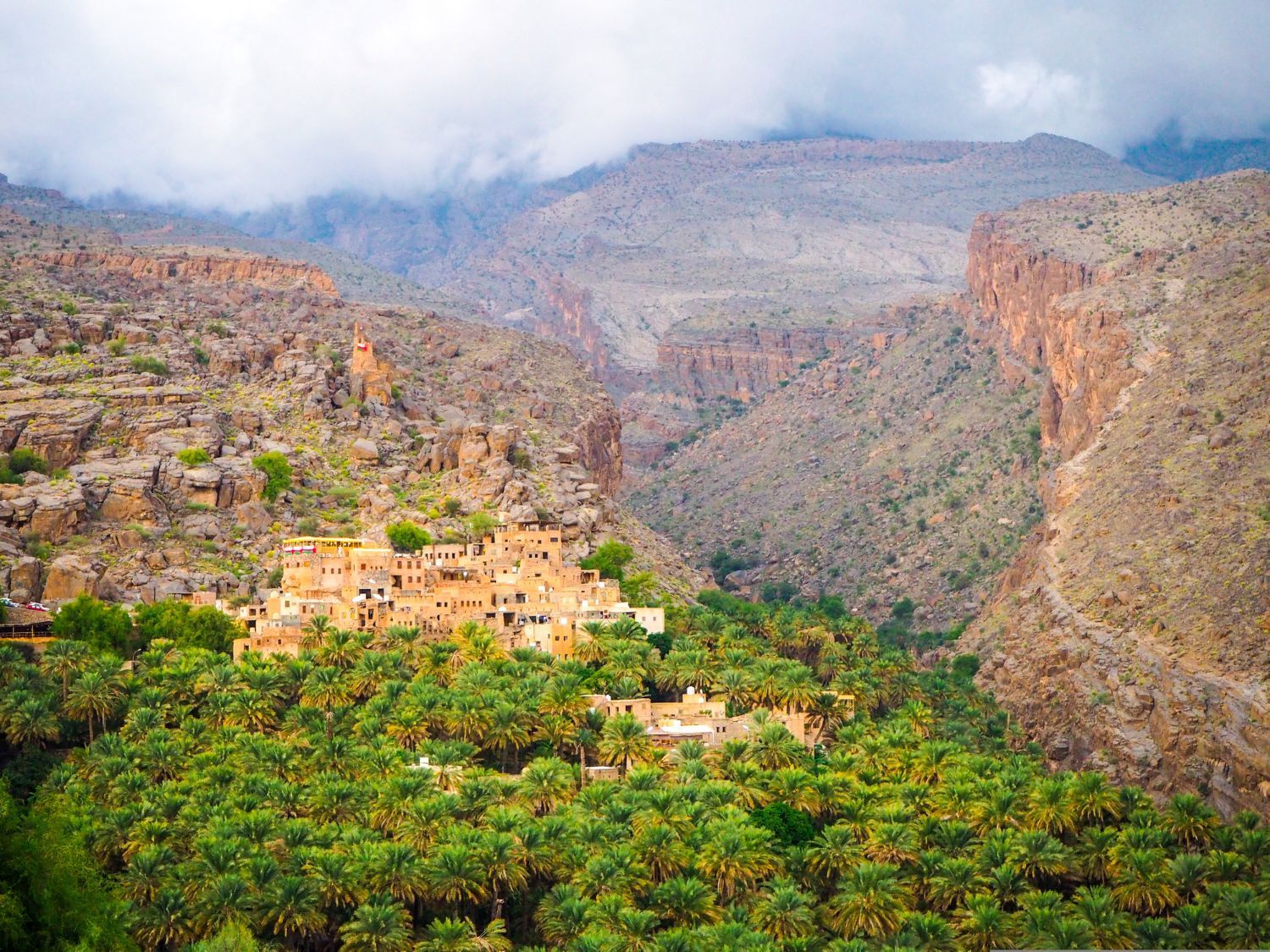The port city of Muscat sits on the Arabian Sea, but it’s the views in the other direction, in-land, that make this majestic, mysterious city so special. Rocky ridgelines layer into the distance behind Muscat. Head southwest, past those mountains and in a couple of hours you’ll reach the humbling enormity of the Hajjar Mountains - a range with a prehistoric feel.
The architecture gives the village a beautifully natural feel. It's an extension of nature, almost as though the village has grown naturally out of the rugged, untouched scenery itself.
Visit Snake Gorge, where natural water pools and slides await in a canyon set between huge, smooth limestone walls. Then lay your camp in the shadow of the Jebel Shams (3009m), the highest mountain in Oman, and indeed in the Arabian Gulf. The mountain is famous for its cliff-edge camping spots and stargazing, with little to no light pollution in the area (if you know how to choose your spot).
A steep summit hike will take you up the main plateau of Jebel Shams. The climb is an all-day effort. You’ll pass goats - the kind for which vertigo is a non-existent concept - and hike along cliffs which seem to drop forever. This isn't known as Oman's Grand Canyon for no reason. Eventually, you'll get the reward for your effort - summiting to far-reaching views of the Wadi Al Sahtan and all Oman.
To think that a town and community could thrive in these arid mountains may seem unlikely, which is why perhaps the most fascinating sight in these mountains lies on the other side of the summit of Jebel Shams - where you'll find the village of Misfat Al Abriyeen. Camouflaged into the dark rocks and crags, but eye-catching for the juxtaposing green plantlife, Misfat Al Abriyeen is Oman’s famous mud village - built into the very rock of the mountainside around it.
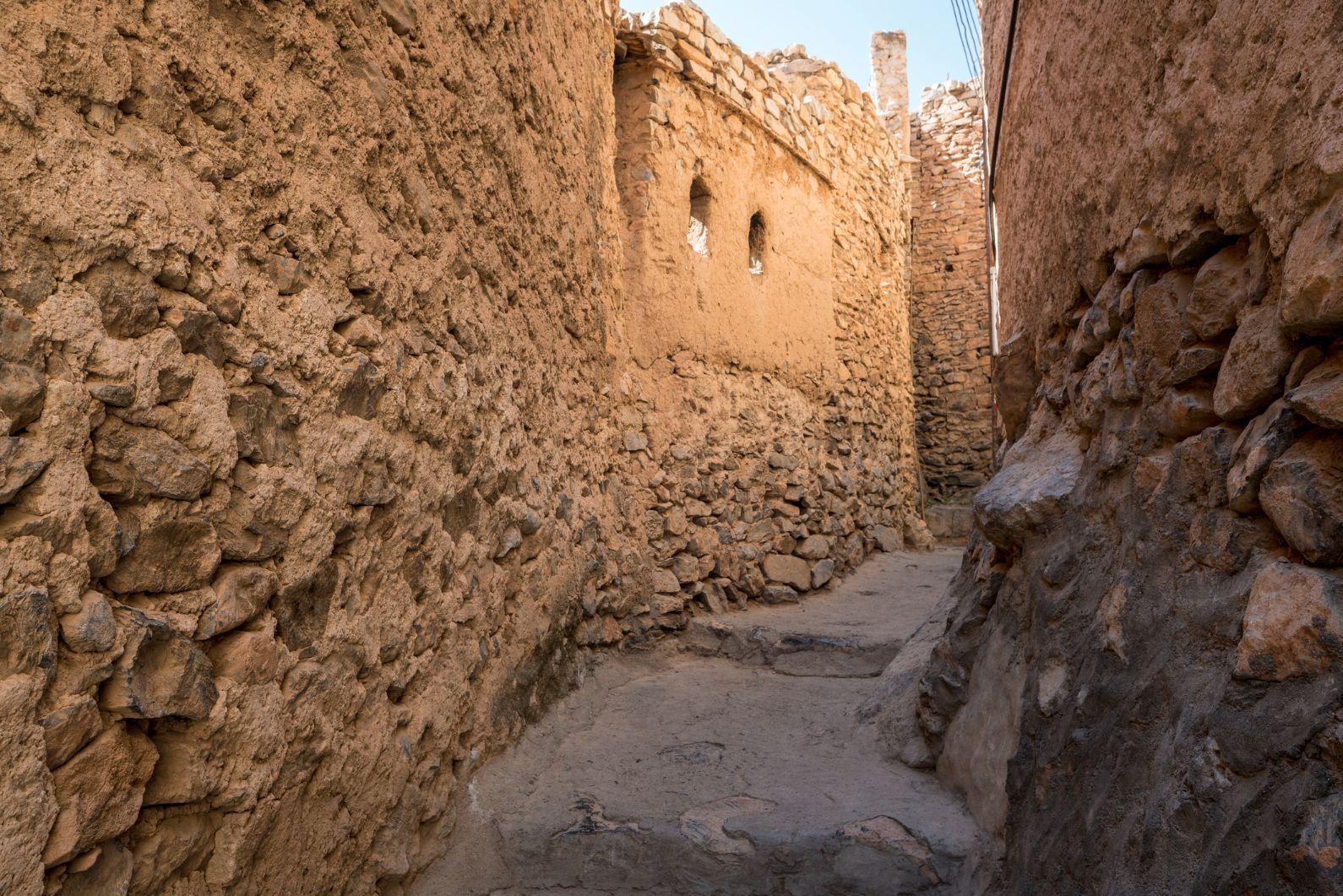
Misfat Al Abriyeen is around 300 years old. It's an oasis town of lush terraces, shadowy passageways and staircases, beaten houses and hard rock, 1000m high, in amongst the barren but beautiful surroundings. The first settlers were from the Omani Al Abri tribe, who farmed the land and had to use whatever resources they had to the full. Hence the mud architecture that's made it so famous today.
The houses of Misfat Al Abriyeen take the mountain rock as their foundation, and are then built from smaller rocks and stones taken from around the area and secured together with mud. The oldest use palm foliage for roofs. The architecture gives the village a beautifully natural feel. It's an extension of nature, almost as though the village has grown naturally out of the rugged, untouched scenery itself.
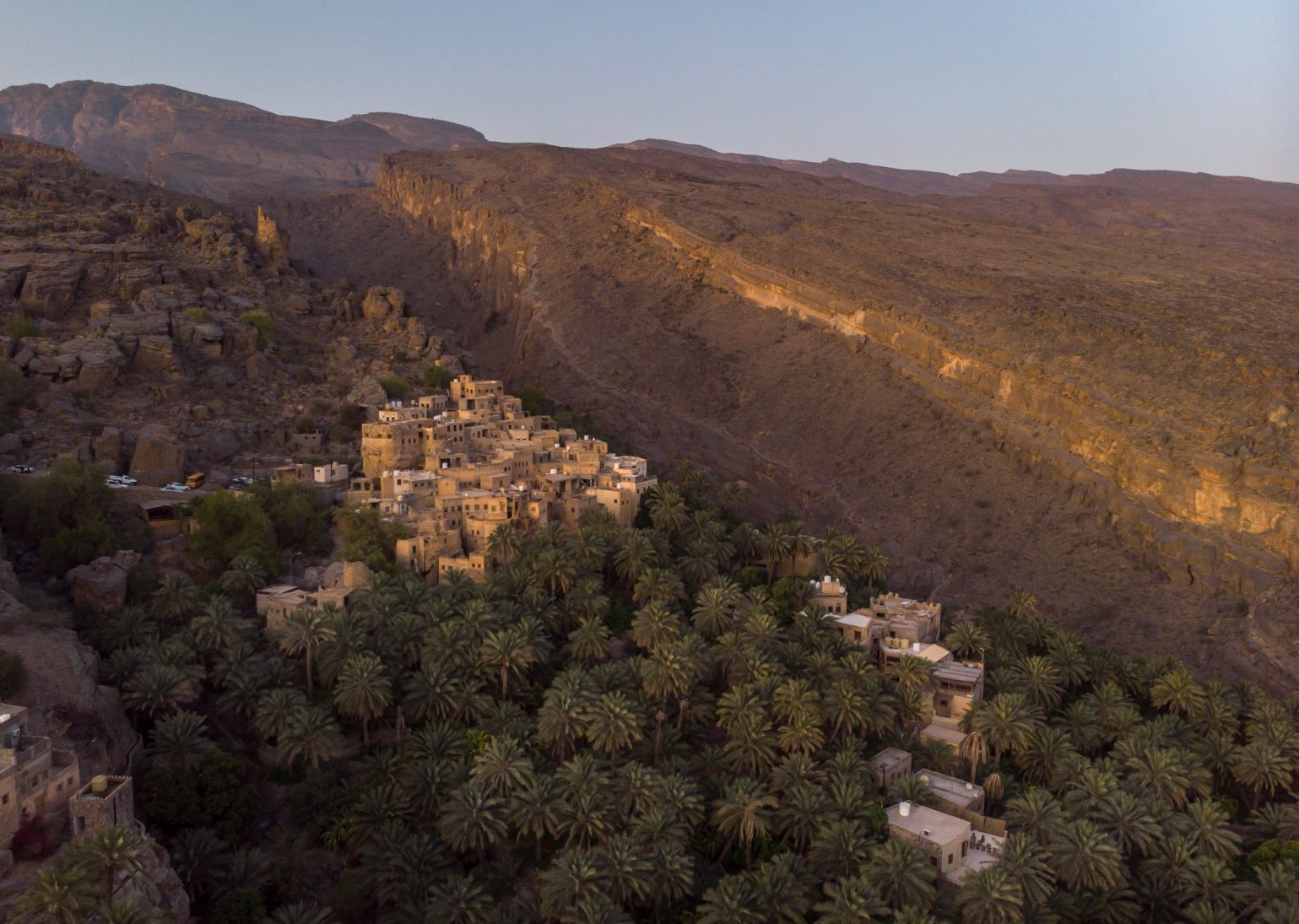
Walking through the tight streets of the old town, you’ll see many of the buildings, broken up occasionally by brightly-coloured doorways, are damaged and now uninhabited. Examine them and you’ll see the makeup of these amazing houses; the mud acting as a sort of cement for the sturdier rocks and stones.
The French philosopher René Descartes once wrote that “travelling is almost like talking to those of other centuries...”
Tourism is having an impact here. A decade ago, many of the old houses were abandoned - locals having left for the new town. The steady stream of visitors is now encouraging locals to renovate old houses to make an additional income.
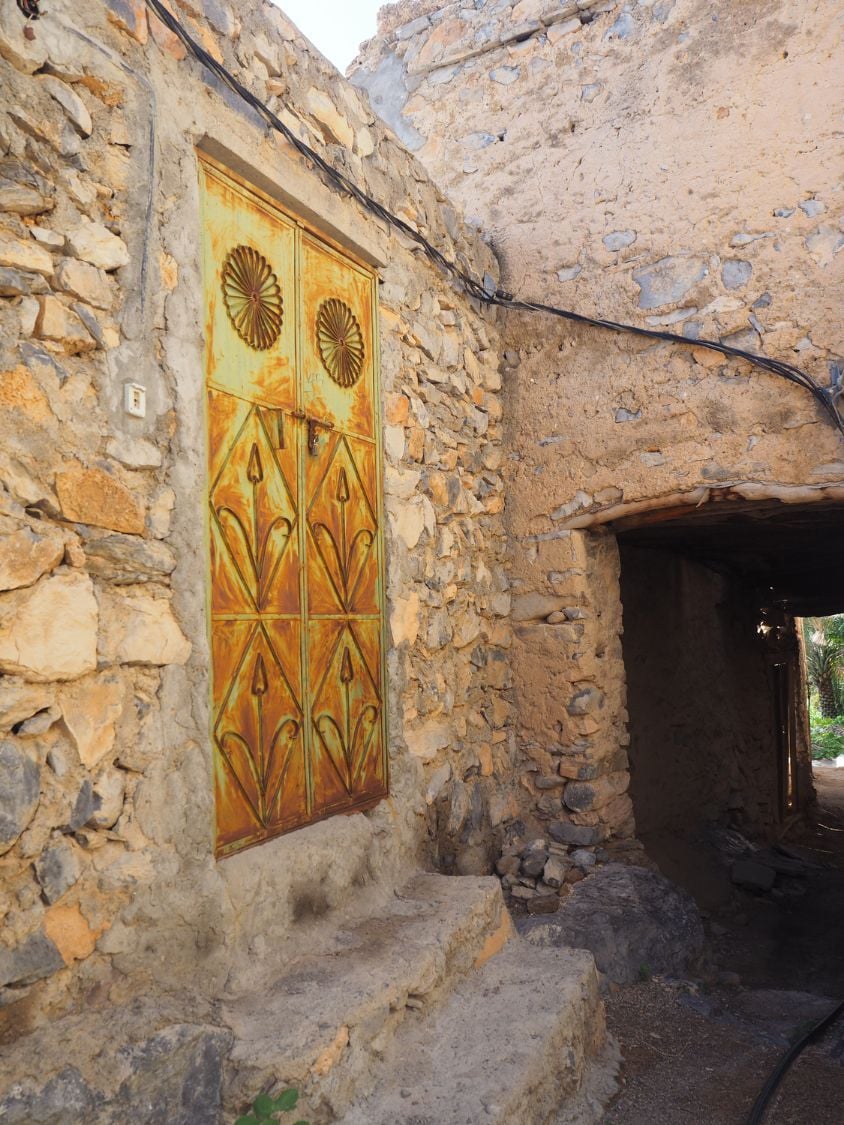
The Misfah Old House (which hosted Prince Charles in 2016) is one example. It offers traditional accommodation and cuisine in the heart of town, the building having been in the owner’s family for three generations. The Rogan Café is a new initiative by three young Omani locals. A new shop, restaurant and connecting pathways and communal spaces have recently been built - aimed at protecting the town's culture and heritage through community-led, sustainable tourism.
This is a place where the people have had to make use of what they have to survive, and have done a startling job of just that. The mud houses are just one of the signatures of Omani culture in the village. Another is the falaj irrigation system - the man-made channels that connect to a spring and mean that even an area as remote and dry as Misfat Al Abriyeen has water.
These water systems are one of the most impressive feats of ancient engineering in the world - some up to 2,700 years old. All around Oman you’ll see examples of this UNESCO-protected falaj system, but in Misfat Al Abriyeen it is particularly striking, the channels carved through the mountain rock.
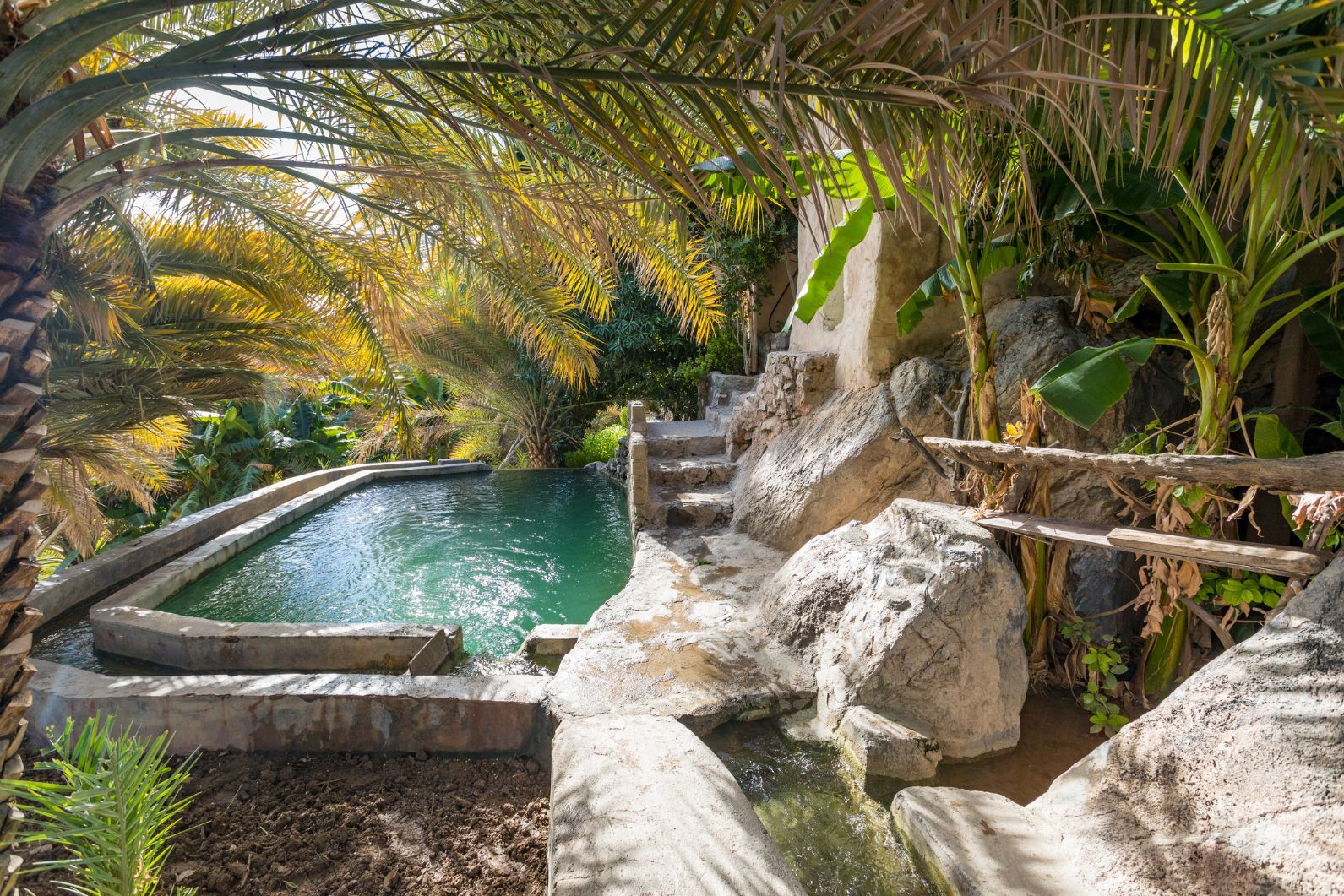
The water is required in the village not just for drinking, but also for the lush agricultural terraces that allow many of the locals to make their living - growing mangoes, bananas, papayas, pomegranates, citrus fruits, dates and more.
The vibrant, flourishing vegetation booms in stark contrast with the seemingly arid surrounding mountain slopes - turning Misfat Al Abriyeen into an impossible little haven of life. Walking around the village can feel like you’re in a Babylonian utopia or an ancient, abandoned and crumbling town depending on where you're standing.
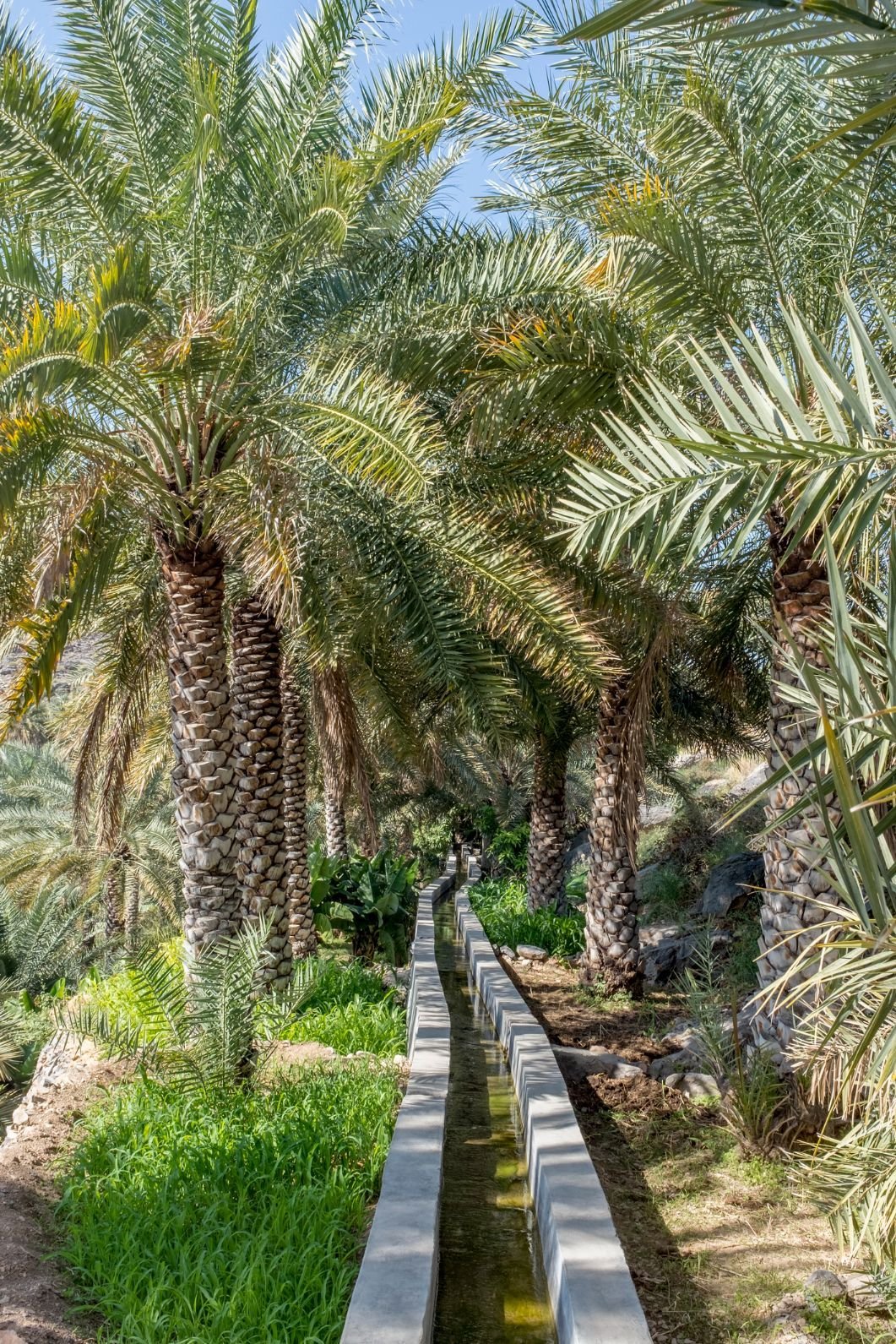
When the rain falls here, the road connecting the village with the far side of the mountain is often cut off by flooding, the falaj systems overflowing onto the road. On the more common days of beating heat, though, the sun rises and sets with a dusty orange that descends over Misfat Al Abriyeen and the mountains behind, making it feel like you could be living in any century since the dawn of time.
Walking around the village can feel like you’re in a Babylonian utopia or an ancient, abandoned and crumbling town depending on where you're standing.
There's no doubt that Oman - one of the oldest countries in the world - is now establishing itself as a hub of modern day adventure. The canyoning in the Snake Canyon is booming. In 2012, Al Humphreys and Leon McCarron, following in the footsteps of the great Wilfred Thesiger, crossed Oman's famous Empty Quarter.
More recently, the Ultra-Trail du Mont-Blanc, a famous long-distance running event, set up the 'Oman by UTMB', bringing a regular endurance race with major credentials to the country. The trail passes through the interior mountains of Oman, and includes ascents of Jebel Shams, as well as passing through Misfat Al Abriyeen and the nearby 17th century mud-fort of Birkat Al Mouz. The more you see of Oman, the more you realise how unique, and ripe for adventure, it is.
The French philosopher René Descartes once wrote that “travelling is almost like talking to those of other centuries,” and never is this more true than when you visit somewhere with a culture unlike any other you've seen before. The resilience of the people of Misfat Al Abriyeen, and their innovations, most made necessary by the remarkable location of the town, surely prove Descartes right.
Inspired? We no longer run a trip to Oman, but you can check out our other adventures across the world.

